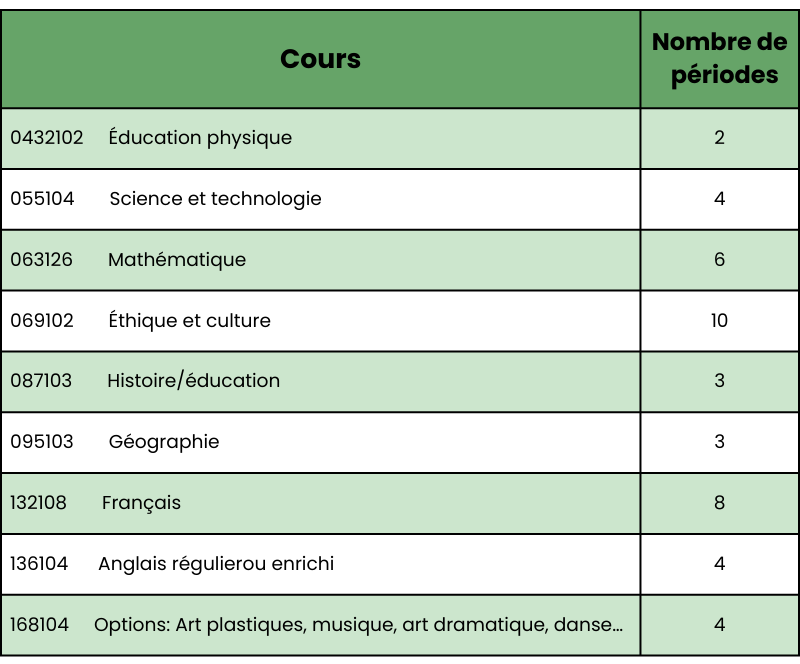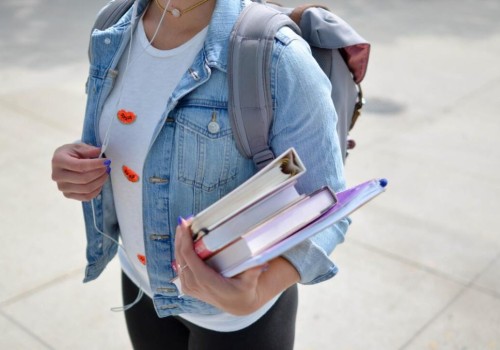Preparing your child for high school


The transition from primary to secondary school brings its share of changes. These can prompt a number of questions and emotions for both child and parent. To help prepare young people for this transition, here is some information for parents of students in grades 5 and 6.
Laval High School Open House
The high school open house is the ideal opportunity for students and parents to familiarize themselves with their new environment, ask questions, and even take a guided tour.
It's also a great opportunity to meet many members of the school team, including teachers, principals, guidance counselors, psycho-education staff, coaching and extracurricular staff, who will all be present at the event.
Every year, the Open House takes place in September. Visit the Centre de services scolaire de Laval website for dates.
The difference in terms of schedule
In high school, the student's schedule is on a 9-day cycle. Here's an example:

There is also changing classes and rooms at breaks and lunchtimes. To reassure students, classrooms are usually in the same area, and lockers are often close by. In high school, students do not bring bags or coats to class. Material must remain in the locker. Between classes, during breaks, students go to their lockers and take only the materials they need for the next class.
Lunchtime activities include sports, arts and music, recycling, social involvement, environmental committees, and student councils. There's also an increased presence of supervisors in the common areas and on the school grounds.
The main difference from primary school is that students have more freedom at lunchtime. They can come and go as they please.
The regular program
In the Secondary 1 regular program, the student ratio is smaller than in Secondary 2, with a maximum of 28 students per class. The subjects on the timetable and the number of periods allocated to them are very similar from one school to another.

However, there are differences between schools in terms of the choice of options or concentrations: music, global health, science, drama, visual arts, basketball, football, health and wellness, soccer, etc. are just a few examples of the diversity of offerings at the CSS de Laval. This could result in minor changes to the distribution of periods or the subject grid.
Specialized programs
Learning support (LS)
A student in a learning support class has been failing both core subjects (French and math) for more than a year. Special education teachers usually teach these classes, which are found in all high schools to serve local students.
Students are taught a modified program that respects their pace and abilities, enabling them to achieve success. The ratio is reduced to a minimum of 12 and a maximum of 16 students per class, and a special education technician is on hand to provide learning support.
Springboard class
This program is designed for students who have encountered difficulties in Grade 6 in the regular program. Typically, these are students who have failed in French and math. The program is offered in all high schools to serve local students, but may vary from school to school.
These classes are generally taught by tenured teachers. The ratio is reduced to a minimum of 12 and a maximum of 16 students per class. This is a 2-year program designed to consolidate learning from primary and secondary 1. The program ends at Secondary 2.
Specialized classes
Specialized classes are not available in every high school in the area. Depending on the student's needs, they will be directed to the school that provides the right service for them. For example, this could include:
- Language support
- Hearing challenges
- Support for learning French
- Mild intellectual impairment with associated disorders
- Moderate to severe intellectual disabilities
- Severe motor impairment and profound impairment
- Behavioural Support
- Emotional support
- SAS (TSA)
Student Support Services
At all times, services and support are available to students according to their needs.
Learning and Adaptation Assistance
- Lunchtime, morning or after-school pick-ups
- Homework Help
- Resource Teacher
- Special Education Technician (TES) and Social Service Worker (SST)
- Intervention plan (computer tools, 1/3 time, support from a TES, etc.)
Professional Support
- Psychoeducators
- Psychologists
- Guidance Counsellors
- AVSEC (Spiritual Life and Community Engagement Animator)
- School Nurse (Sexuality/Contraception)
- Addiction Social Worker
Back to school: Day 1
Despite all these changes, there's no need to worry. A number of introductory activities are planned, including an orientation assembly at school, a lunch with their homeroom teacher, a back-to-school event exclusively for Secondary 1 students, an activity to familiarize your child with their locker, etc.








